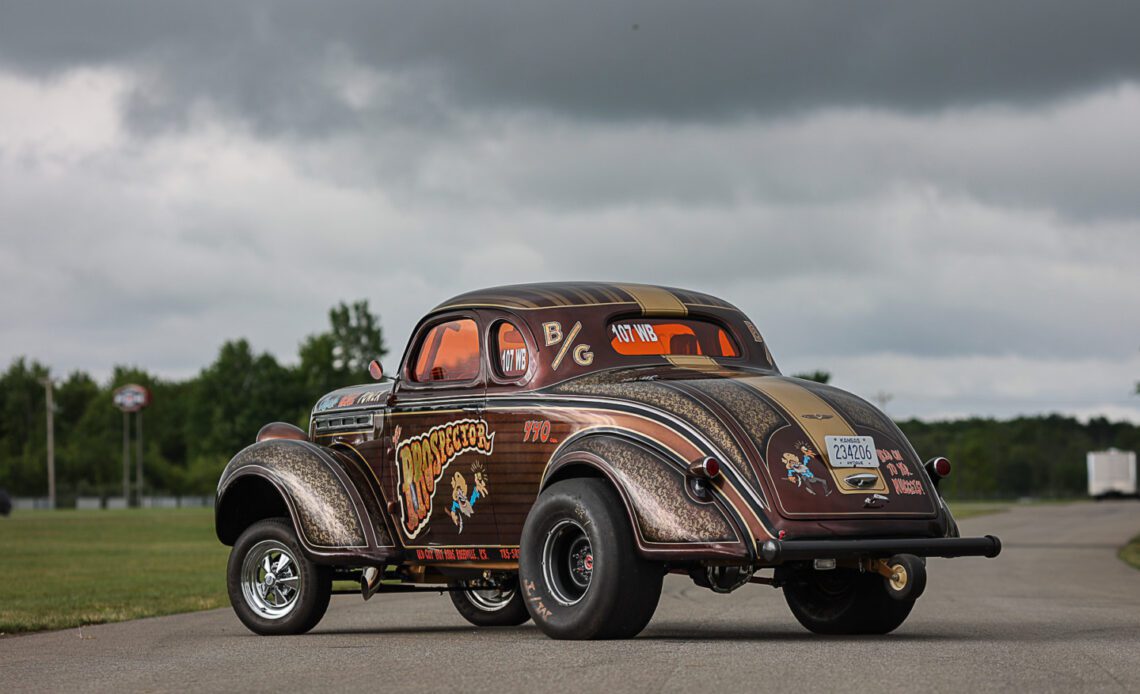There’s a certain level of satisfaction that comes from building something with your own two hands. Bob Larson spent the better part of seven years building his 1939 Dodge Coupe gasser called “The Prospector” during the evenings and on the weekends. The final product is one of the coolest street/strip cars you’ll ever see.
Larson’s history with building and restoring cars began when he was in high school after he purchased a 1936 Chevy coupe. Larson and a friend worked on the Chevy so he could drive it to school and eventually college. From that point forward, Larson always had some type of project car that he would tinker with.
Larson would eventually start his own shop called Old Guy Hot Rods. While building nice looking cars is fun, Larson still enjoys making hits at the track. Hot Rod Drag Week caught Larson’s eye, so he entered the event with his rat rod and had a blast. The Drag Week experience pushed Larson towards building a car for drag-and-drive events. The gasser class really spoke to Larson and that’s what started The Prospector project. So, Larson started his journey to build a hot rod that he could drive on the street to shows, or to the track to make some passes.
“I bought this car 30 years ago and started collecting parts for it. The car was wrecked and a real mess, but I thought I could fix it. I’m a Mopar fan, so I was happy to find an old Mopar since I didn’t want to build another Ford or Chevy. I worked on my customer’s cars during the week and messed with this car on the weekends, that’s why it took so long to build,” Larson says.
The detail and work that Larson put into The Prospector is truly amazing, and he did all of it himself. The only thing that Larson didn’t do was the machine work on the engine. Larson did all of the fab work, assembly, painting, lettering, and he even did the upholstery work himself.
Instead of using a HEMI to power his gasser, Larson opted to build a 541 cubic-inch Chrysler Wedge engine. Clegg Engine & Machine got the block ready for the SCAT crankshaft, SCAT rods, and Icon pistons to be dropped in. A set of Trick Flow aluminum heads and INDY tunnel ram intake top off the engine. Larson used valve train parts from Howard’s Cams. A pair of Edelbrock AVS-2 650 CFM carburetors bring air into the engine and mix it with fuel that’s pumped in by an Aeromotive fuel pump. Larson made the fender exit headers that expel the exhaust gasses himself.
You can’t have a gasser…
Click Here to Read the Full Original Article at DragzineDragzine…

